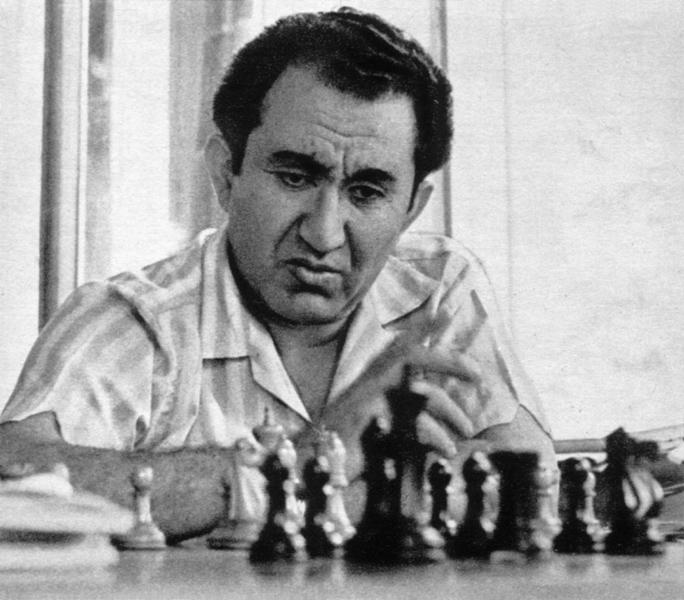
Petrosian vs. Botvinnik | World Chess Championship 1963
Mikhail Tal had come and gone; the older Mikhail (Botvinnik) was still on the throne of chess. But in 1963, another archetypal chess player which had heretofore not been seen made his appearance.
Tigran Petrosian was born in 1929 in Tbilisi, Georgia (then a part of the Soviet Union). His parents were Armenians, and he relocated first to Armenia and then to Moscow as a young man.
Petrosian's style of play was highly unusual and eccentric -- perhaps as much so as Tal's, but in a way that was less likely to be endearing to the public. On the surface, Petrosian was a very quiet player who often was willing to make draws. But strong players understood that, despite his quiet openings and focus on safety, at his heart he was a tactician.
However, his tactics were not used for wild and speculative attacks as Tal's were, but rather to find tricky defensive resources and unusual pitfalls for the opponent in apparently promising positions. Petrosian inspired generations of Armenian and -- to some extant -- Georgian players with a similar cat-like ability to navigate difficult positions and land on their feet.
But at the time, Petrosian was quite an original, only bearing some similarities to Nimzowitsch, who was one of his role models.

Statue of Petrosian via wikipedia
The match, which took place in Moscow (as did all world championship matches between 1948 and 1972), started off with Petrosian suffering from some opening jitters and losing badly with the white pieces. I remember reading that Petrosian also had this problem in his debut in the Soviet Championship many years before, losing in 13(!) moves to Alexander Kotov.
But it seems that this problem was confined to these two major debuts -- and otherwise "Iron Tigran's" nerves held steady.
Despite the loss in the first game, Petrosian maintained his patience. A typical psychological reaction would be to try to get revenge immediately. But Petrosian did not do this, instead playing cautiously to draw the next few games. He understood that the itch to avenge his defeat was self-destructive.
In the fifth game, Petrosian was again playing for two results (win or draw) and this time was able to break through and win. I have already annotated this game in my column before ("From Opening to Endgame: Petrosian's Triumph") but here I present it again:
With this game, Petrosian had only equalized the match (and due to the fact that Botvinnik would remain the champion in the event of a tie, he was still in effect behind in the match). However, the psychological initiative was firmly on his side.
Only two games later, he won a crushing game to take the lead. After a series of six draws, Botvinnik equalized the score. But in the very next game Petrosian won an endgame in the classical style -- a strong bishop against a knight, a more active rook, and an inexorable gaining of space and activity:
After this, Botvinnik was down one point -- still far from insurmountable, considering that he only needed to score +1 by the end of the match to keep his title.
The 18th game was crucial for Petrosian's victory.

Petrosian won an elegant queenless middlegame with the black pieces.
Botvinnik's resistance was broken after this game. He lost the following one as well, and acknowledged that he could not make up lost ground by agreeing to three short draws, making Petrosian the ninth world champion.
Thus the "Botvinnik era" came to a close, although he continued to remain an influence on Soviet chess through training work -- running a celebrated academy which helped to train Garry Kasparov many years later.
RELATED STUDY MATERIAL
- Read the previous article in this series, Clash of Champions: Tal vs. Botvinnik (1961 Rematch)
- Watch GM Roman Dzindzichashvili's Greatest Chess Minds video on Petrosian.
- Play a match between Petrosian and Fischer in the Chess Mentor.
- Practice your world-championship-level combinations in the Tactics Trainer.
- Looking for articles with deeper analysis? Try our magazine: The Master's Bulletin.



